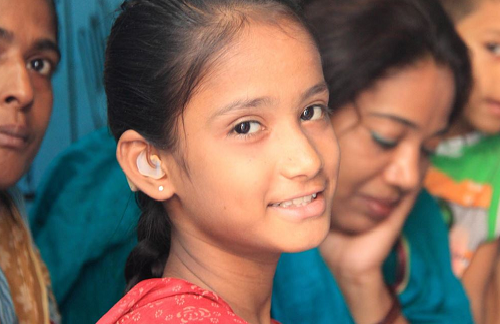Hearing loss, which currently affects 20% of the global population, has risen from the 11th leading cause of years lived with disability in 2010 to currently being the third leading cause.
A complex web of determining factors impacts hearing at different stages of life, including genetic characteristics, health conditions, living and working environment, and age-related degeneration. Many causes of hearing loss are preventable through public health measures. But it can become a chronic condition and worsen over time if not managed.
Many people with hearing loss do not actively seek hearing care for various reasons including limited awareness, high cost, and stigma. People with uncorrected hearing loss can experience difficulties with communication, mental health problems, social isolation, and a high unemployment rate.
In the World Report on Hearing published in 2021, WHO recommended a comprehensive set of interventions (H.E.A.R.I.N.G.) covering prevention, management, rehabilitation, and environmental factors. A modelling study published earlier this year in The Lancet Global Health used data from 172 countries to examine the cost-effectiveness of the interventions recommended by WHO. It estimates that 90% implementation of the core interventions will avert 130 million DALYs – ie, a monetary gain of $1·3 trillion – in 10 years, corresponding to a return of $15 for every $1 invested. Hearing aids are one major component of this set of cost-effective interventions, serving as first-line clinical management.
Nonetheless, for hearing aids to truly aid, some challenges must be tackled. First and foremost, cost. The global supply of hearing aids is mainly controlled by manufacturers headquartered in high-income countries, whose current pricing strategies seem to overlook affordability in low-income and middle-income countries (LMICs). Therefore, to bring down the price of hearing aids, investments and infrastructural support should be directed to new manufacturers located in LMICs to develop safe and low-cost hearing aids with features that satisfy local needs. In addition, national universal health coverage plans should consider including hearing aids and other hearing care to reduce out-of-pocket payment.
Affordable devices remove the financial barrier, yet other factors influencing people’s willingness to use hearing aids still stand in the way. A second challenge would be to mobilise people. Raising awareness of hearing loss and the harm of untreated hearing impairment is a key first step. Providing clear labelling, trial use, and easy-return policies can further remove hesitation to use hearing aids. More importantly, we should strive to de-stigmatise hearing loss. Unless we change how societies view people wearing hearing aids and actively engage the community to support people with hearing loss, we can hardly improve the health inequities experienced by this population.
A final challenge lies in the shortage of qualified workforce in LMICs (and rural and remote parts of countries such as Australia) to deliver prevention, treatment, and rehabilitation for people with hearing loss. The long-term solution would be through health system strengthened with a focus on primary care. Primary care workers can play an important role in expanding access to hearing care by participating in screening, raising awareness, and delivering treatment such as fitting hearing aids. And their work is likely to be cost-effective.
Hearing loss, a pressing yet often invisible problem, requires more attention from global health researchers and a systematic effort that considers various needs of diverse groups with vulnerabilities across the life course. Access to hearing aids is one crucial link in this effort, together with public awareness, a supportive community, a competent workforce, and a hearing-safe living and working environment.
Article info: DOI: https://doi.org/10.1016/S2214-109X(22)00390-4
Article from The Lancet Global Health

